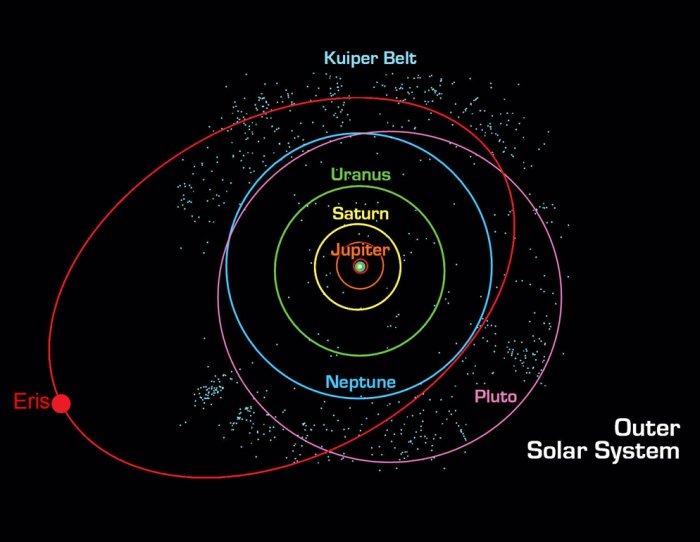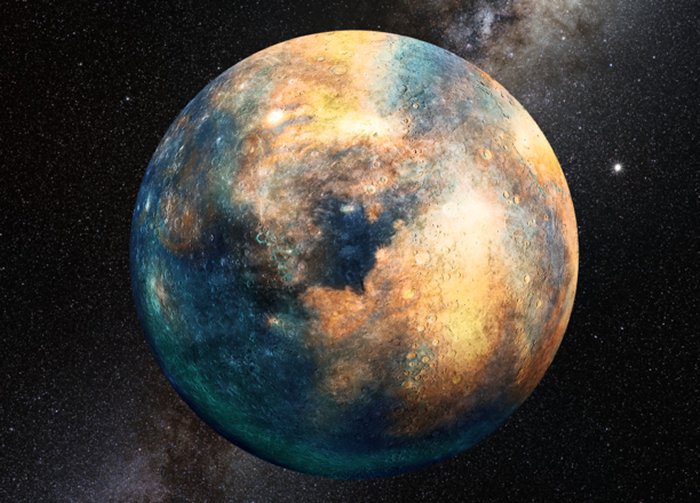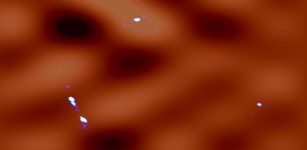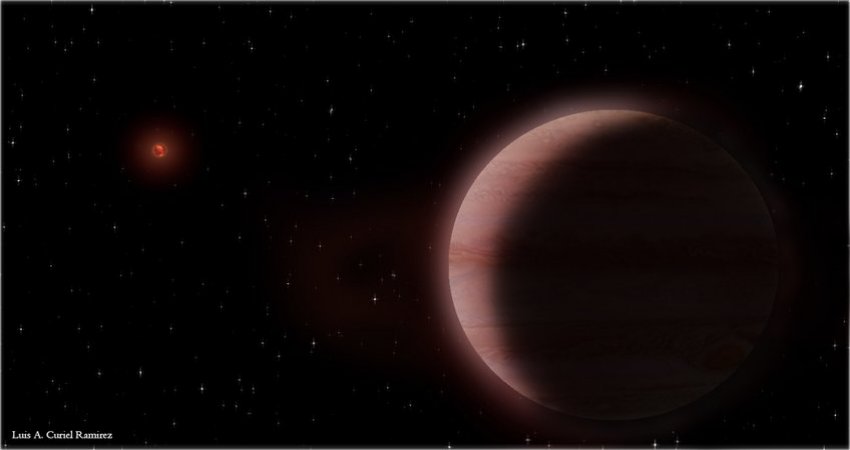Unknown Planet-Sized Object Is Hiding Beyond Pluto – Is Planet 10 Responsible For The Warped Kuiper Belt?
MessageToEagle.com – Astronomers report they have evidence an unknown, unseen “planetary mass object” may lurk in the outer reaches of our solar system. The object has a planetary body with a mass somewhere between that of Mars and Earth.
Could this be Planet 10? Is this unknown object responsible for the warped Kuiper Belt?
The object is different from and much closer than the so-called Planet Nine, a planet whose existence yet awaits confirmation.
In our article the Kuiper Cliff Mystery, we discussed that scientists have not been able to explain why the Kuiper belt suddenly ends.
According to the most controversial theories a lurking planetary body the size of Earth or Mars has swept up the objects gravitationally, creating the Kuiper Cliff.
Now, it seems this theory is not so far-fetched after all.

Kat Volk and Renu Malhotra of the University of Arizona’s Lunar and Planetary Laboratory, present compelling evidence of a yet-to-be- discovered planetary body with a mass somewhere between that of Mars and Earth. The mysterious mass, the authors show, has given away its presence — for now — only by controlling the orbital planes of a population of space rocks known as Kuiper Belt objects, or KBOs, in the icy outskirts of the solar system.
Why Does The Kuiper Belt Suddenly End?
The Kuiper Belt (named after Kuiper) extends from about 30 to 55 AU and is probably populated with hundreds of thousands of icy bodies larger than 100 km (62 miles) across and an estimated trillion or more comets. Pluto and three other dwarf planets reside in the Kuiper Belt.
What is truly puzzling is that for some unknown reason, the Kuiper Belt abruptly ends roughly about 50 astronomical units from the Sun.
Theoretical models predict an increase in number of icy bodies. Instead, the rocks stop. The drop off is so dramatic, that the feature of nothingness that exists outside the Kuiper Belt has been nicknamed the Kuiper Cliff.

While most KBOs orbit the sun with orbital tilts (inclinations) that average out to what planetary scientists call the invariable plane of the solar system, the most distant of the Kuiper Belt’s objects do not.
Their average plane, Volk and Malhotra discovered, is tilted away from the invariable plane by about eight degrees. In other words, something unknown is warping the average orbital plane of the outer solar system.
“The most likely explanation for our results is that there is some unseen mass,” says Volk, a postdoctoral fellow at LPL and the lead author of the study. “According to our calculations, something as massive as Mars would be needed to cause the warp that we measured.”
For the study, Volk and Malhotra analyzed the tilt angles of the orbital planes of more than 600 objects in the Kuiper Belt in order to determine the common direction about which these orbital planes all precess. Precession refers to the slow change or “wobble” in the orientation of a rotating object.
“Imagine you have lots and lots of fast-spinning tops, and you give each one a slight nudge,” she says. “If you then take a snapshot of them, you will find that their spin axes will be at different orientations, but on average, they will be pointing to the local gravitational field of Earth.
“We expect each of the KBOs’ orbital tilt angle to be at a different orientation, but on average, they will be pointing perpendicular to the plane determined by the sun and the big planets.”
See also:
Cosmic Mystery – What Happened To Earth’s Second Moon?
Planet X: Four Candidates For Planet X Located And Examined
Was Mysterious Planet 9 Stolen By Our Sun 4.5 Billion Years Ago?
Mystery Of Planet V – Was There Once A 5th Planet Between Mars And The Asteroid Belt?
If one were to think of the average orbital plane of objects in the outer solar system as a sheet, it should be quite flat past 50 AU, according to Volk.
“But going further out from 50 to 80 AU, we found that the average plane actually warps away from the invariable plane,” she explains. “There is a range of uncertainties for the measured warp, but there is not more than 1 or 2 percent chance that this warp is merely a statistical fluke of the limited observational sample of KBOs.”
A Planetary Mass Object Can Be Responsible For The Warped Kuiper Belt
“The observed distant KBOs are concentrated in a ring about 30 AU wide and would feel the gravity of such a planetary mass object over time,” Volk said, “so hypothesizing one planetary mass to cause the observed warp is not unreasonable across that distance.”
A yet to be discovered, unseen “planetary mass object” makes its existence known by ruffling the orbital plane of distant Kuiper Belt objects, according to research by Kat Volk and Renu Malhotra of the UA’s Lunar and Planetary Laboratory. The object is pictured on a wide orbit far beyond Pluto in this artist’s illustration. (Image: Heather Roper/LPL)
This rules out the possibility that the postulated object in this case could be the hypothetical Planet Nine, whose existence has been suggested based on other observations. That planet is predicted to be much more massive (about 10 Earth masses) and much farther out at 500 to 700 AU.
“That is too far away to influence these KBOs,” Volk said. “It certainly has to be much closer than 100 AU to substantially affect the KBOs in that range.”
Because a planet, by definition, has to have cleared its orbit of minor planets such as KBOs, the authors refer to the hypothetical mass as a planetary mass object. The data also do not rule out the possibility that the warp could result from more than one planetary mass object.
Why Haven’t We Found Planet 10 Yet?
If a planet is lurking beyond Pluto we should have found it by now, but we haven’t. According to researchers the reason why we still haven’t been able to spot the mysterious planet is because we haven’t yet searched the entire sky for distant solar system objects. The most likely place a planetary mass object could be hiding would be in the galactic plane, an area so densely packed with stars that solar system surveys tend to avoid it.
“The chance that we have not found such an object of the right brightness and distance simply because of the limitations of the surveys is estimated to be to about 30 percent,” Volk said.
A planetary mass object the size of Mars would be sufficient to produce the observed perturbations in the distant Kuiper Belt. (Image: Heather Roper/LPL)
A possible alternative to an unseen object that could have ruffled the plane of outer Kuiper Belt objects could be a star that buzzed the solar system in recent (by astronomical standards) history, the authors said.
“A passing star would draw all the ‘spinning tops’ in one direction,” Malhotra said. “Once the star is gone, all the KBOs will go back to precessing around their previous plane. That would have required an extremely close passage at about 100 AU, and the warp would be erased within 10 million years, so we don’t consider this a likely scenario.”
Humankind’s chance to catch a glimpse of the mysterious object might come fairly soon once construction of the Large Synoptic Survey Telescope is completed.
MessageToEagle.com
Expand for references











